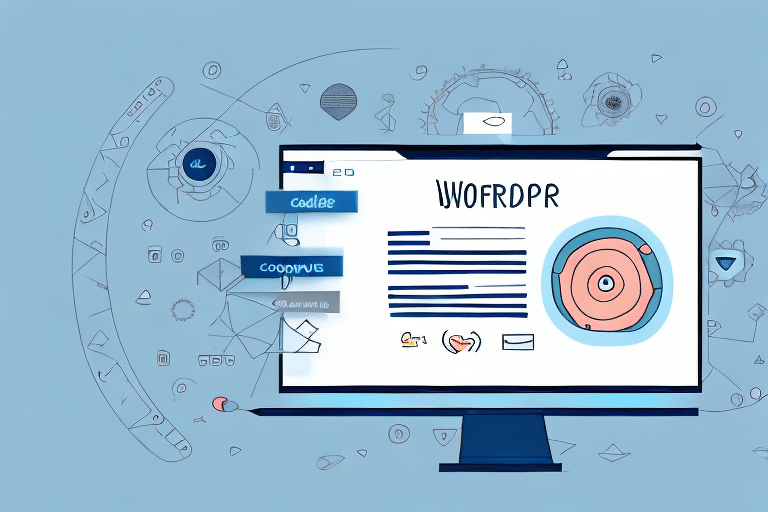How to Transfer Your Address Book from UPS to Network Admin WorldShip
If you're currently using UPS to manage your address book for shipping, you may be considering the benefits of switching to [Network Admin WorldShip (NAWS)](https://www.shipscience.com/worldship). This powerful shipping solution offers a range of features and advantages that can help streamline your shipping operations and enhance efficiency. In this article, we'll explore the benefits of NAWS and guide you through the process of transferring your UPS address book to this robust new platform.
Why Move Your Address Book to Network Admin WorldShip?
One of the key benefits of NAWS is its ability to simplify the overall shipping process. By consolidating all of your shipping information into one comprehensive platform, you can streamline your workflow and reduce the likelihood of errors. Additionally, NAWS offers advanced features such as address book filtering, automatic package rating, and label customization, which can help you save time and resources. With NAWS, you'll have access to detailed shipping data, enabling you to make informed decisions and optimize your shipping strategies.
Moreover, NAWS provides a secure and reliable platform for managing your address book. You can easily import and export contacts, update information, and ensure that your address book remains current. NAWS also allows you to create custom groups and labels to organize your contacts, further streamlining your shipping process. By migrating your address book to NAWS, you centralize your shipping operations and improve overall efficiency.
Understanding the Benefits of Network Admin WorldShip
Before we delve into the process of transferring your UPS address book, let's examine some of the key features and benefits of NAWS:
- Simplified Shipping: Consolidate all your shipping information into a single, powerful platform, simplifying the overall shipping process.
- Advanced Features: Utilize features such as address book filtering, automatic package rating, and label customization to save time and resources.
- Detailed Shipping Data: Access comprehensive shipping data to make informed decisions and optimize your shipping strategies.
Another notable advantage of NAWS is its ability to integrate with other shipping carriers, allowing you to compare rates and select the most cost-effective option for your business. This integration can lead to significant savings on shipping costs and positively impact your bottom line.
Additionally, NAWS offers robust reporting capabilities, enabling you to track and analyze your shipping data over time. This analysis can help you identify trends, pinpoint areas for improvement, and make data-driven decisions to optimize your shipping operations.
Step-by-Step Guide to Transferring Your UPS Address Book
Understanding the benefits of NAWS is the first step. Now, let's walk through the process of transferring your UPS address book:
Preparing Your UPS Address Book for Transfer
Before transferring your UPS address book to NAWS, ensure that it's properly formatted. Start by exporting your UPS address book as a CSV file. Open the file in a spreadsheet program like Microsoft Excel and adjust the columns to match the NAWS address book format. This may involve changing column headings, rearranging column order, and removing any unnecessary data.
Exporting Your UPS Address Book to Network Admin WorldShip
Once your address book is correctly formatted, you can export it to NAWS. Log into NAWS and navigate to the Address Book section. Select the option to import a new address book and choose the CSV file you prepared. NAWS will import your address book, allowing you to review and edit the entries as needed.
Importing Your UPS Address Book into Network Admin WorldShip
After exporting your address book from UPS and importing it into NAWS, begin configuring your new address book. Access the settings menu in NAWS and navigate to the Address Book section. Here, you can sort and filter your addresses, set default addresses, and configure other preferences.
Configuring Your New Address Book in Network Admin WorldShip
Post-import, you may encounter common issues such as missing or incorrectly formatted addresses. To resolve these, review your original UPS address book to ensure accurate data formatting and manually add any missing addresses into NAWS. For more complex issues, consider reaching out to [NAWS Support](https://www.shipscience.com/support) for assistance.
It's important to note that after transferring your UPS address book to NAWS, changes made in NAWS will not reflect in your UPS address book. Any future modifications to your UPS address book must be done directly in UPS, followed by re-exporting and importing into NAWS.
If you manage multiple UPS accounts with separate address books, you'll need to export and import each address book individually, as NAWS currently does not support merging multiple address books into a single account.
Best Practices for Maintaining Your New Address Book in Network Admin WorldShip
After successfully transferring your UPS address book to NAWS, it's crucial to maintain it regularly. Implement the following best practices to ensure your address book remains accurate and efficient:
- Regular Data Cleansing: Periodically review your address book to ensure all data is up-to-date and accurate.
- Segmentation and Filtering: Utilize NAWS's filtering and segmentation features to organize your address book by customer type, location, or other relevant criteria.
- Regular Backups: Frequently back up your address book to prevent data loss in the event of a system failure.
Additionally, regularly update your contacts' information, including names, addresses, phone numbers, and email addresses. Keeping this information current ensures accurate deliveries and facilitates effective customer communication.
It's also important to review and update your address book's security settings regularly. Set appropriate user permissions and access levels to ensure that only authorized personnel can access sensitive information. Regularly update your passwords to maintain a high level of security.
How to Sync Your New Address Book with Other Applications and Devices
Syncing your new NAWS address book with other applications and devices is essential for maintaining consistency across your shipping operations. Explore the various integrations that NAWS offers, including those with popular third-party shipping platforms and marketplaces. By syncing your address book across multiple channels, you ensure that all your shipping data remains consistent and up-to-date, regardless of where you're shipping from.
In addition to syncing with other shipping applications and devices, regularly update and maintain your address book by removing outdated or incorrect information and adding new contacts as necessary. This proactive maintenance helps avoid shipping delays and ensures that packages are delivered to the correct recipients.
Another effective strategy for syncing your address book is to use a cloud-based service, such as [Google Contacts](https://contacts.google.com/) or [iCloud](https://www.icloud.com/). These services allow you to access your address book from any device with an internet connection, and any changes made are automatically synced across all devices. Many shipping platforms and marketplaces offer integrations with these cloud-based services, simplifying the process of keeping your address book up-to-date and synchronized across multiple channels.
Transitioning to a New Shipping Solution with Ease and Efficiency
Transferring your UPS address book to NAWS is a strategic move to streamline your shipping operations and enhance efficiency. By following the steps outlined in this guide and adopting best practices for maintaining your address book in NAWS, you ensure that your shipping data remains accurate, up-to-date, and well-organized. This foundation allows you to fully leverage the advanced features and capabilities of NAWS to elevate your shipping operations.
One of the standout benefits of using NAWS is the ability to track your packages in real-time. With NAWS, you can monitor shipment statuses, receive alerts for any delays or issues, and adjust your delivery preferences as needed. This level of visibility and control helps you manage inventory more effectively, reduce shipping costs, and boost customer satisfaction.
Beyond tracking, NAWS offers a suite of tools and resources to optimize your shipping operations. Access detailed analytics and reporting features to gain insights into your shipping patterns, identify areas for improvement, and make data-driven decisions. Additionally, NAWS integrates seamlessly with other business systems, such as inventory management and order fulfillment platforms, further streamlining your operations and enhancing overall efficiency.




















